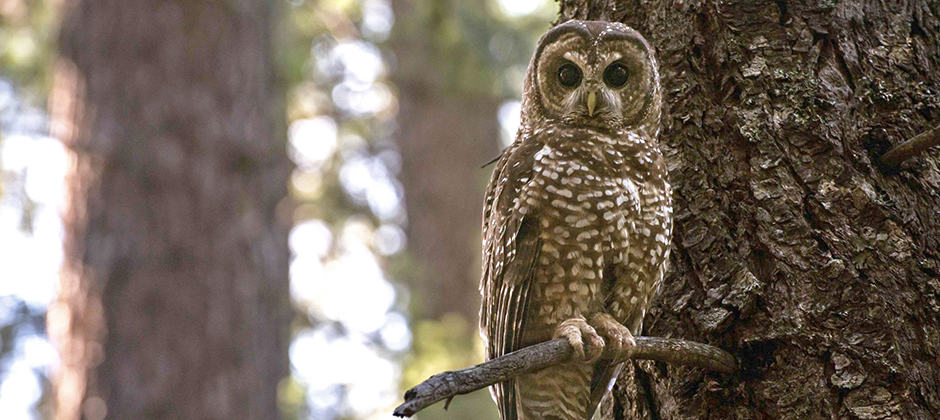Share this article
Student Research: Counting the same bird more than once?
When Gavin Jones and his colleagues at the University of Wisconsin-Madison were studying spotted owls (Strix occidentalis) in the central Sierra Nevada in California, they noticed something interesting — the owls they banded with colored tags were showing up in territories that weren’t their own.
After putting GPS tags on the owls, Jones and colleagues found that the birds could visit up to five or six territories aside from the one they were defending.
This caused Jones to wonder: If the birds weren’t tagged with colored bands, would researchers be counting the same individual twice — or even three or four times — when surveying for owls and determining whether or not territories are occupied?
“Throughout the years, we have had a good number of cases where we observed individual owls in the ‘wrong’ territory,” Jones said. “We’ll be surveying a certain territory expecting to see the owl with the orange leg band, and instead we see the owl with the blue leg band that we know occupies a territory a couple miles down the canyon. Other times we’ll visit a different territory that we are quite certain is vacant, and detect another owl — like the owl with the orange leg band — that occupies a different territory, moving through. This second case, where an owl is detected in an otherwise unoccupied territory, poses a challenge for accurately monitoring populations of unmarked owls.”
Jones, a PhD student at the University of Wisconsin-Madison, presented his research on these “false positive” detections at the annual TWS conference in Cleveland. He earned third place in the presentation category for Student Research in Progress.
Jones and his colleagues banded about 95 percent of the owls on their study area and were able to analyze how many sites the owls occupied and which bird was detected in which 400-hectare territory. They marked down when they heard an owl hooting at night and followed up with a daytime survey.
Then, they tested how often false positive detections would occur if the birds weren’t tagged by removing the original identification in their data. They found that up to 20 percent of owl detections were false positives. There was an even higher bias after a severe fire burned through the area.
“There was a higher incidence of them moving about otherwise unoccupied territories,” Jones said. “That’s important because some scientists have shown occupancy of spotted owl territories is higher after severe fire than you might expect. What we’ve shown is that this result of high occupancy might be upwardly biased, because you might be double-, triple-, quadruple-counting birds.”
Jones said the solution isn’t banding all birds — that’s too expensive and time-consuming. But what they did find was that many of these false positive detections occurred at night. He suggests eliminating nocturnal detections and using more daytime detections to eliminate bias.
Jones said while information on spotted owls using territories that aren’t their own may be important, if the researcher’s purpose is to detect territorial occupancy and assess population status, these false positives can skew data.
Jones said the study may also be applied to other studies of species occupancy.
“You have to make sure your sampling aligns with animal movements,” he said. “This study was really the first one to look at false positive detections that were movement related,” Jones said.
Header Image:
Spotted owls often move through other territories, making it harder to count them for occupancy surveys.
©D. Hofstadter








